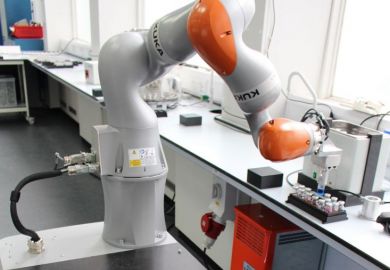Undaunted by the great mass, intellectual range and contextual variety of Joseph Priestley's work and life, Robert Schofield deserves our lasting gratitude for bringing to bear a scholarly lifetime's knowledge of his subject in this concluding volume of his intellectual biography. The first volume, The Enlightenment of Joseph Priestley (1997), covered early years - education, ministry and teaching in Needham Market and Nantwich, the distinguished teaching career at Warrington Academy and ministry at Mill Hill Chapel, Leeds. It clarified the foundations of his early reputation as an educator, his emergent identity as religio-political controversialist and his early science, including the ground-breaking "Observations on different Kinds of Air" for the Phil. Trans . of 1772.
This volume resumes as Priestley left Leeds to become companion to Lord Shelburne. These were auspicious days for Priestley. Close to Benjamin Franklin, on friendly terms with Edmund Burke and awarded the Royal Society's Copley Medal for his pneumatic researches, his reputation as reforming intellectual flowered. His seven years with Shelburne extended his scientific research and established his philosophical monism and necessitarianism, while he championed the cause of the American colonists.
The two parted company as Shelburne moved closer to power, and Priestley spent the next decade in Birmingham, pursuing his agenda of Unitarian religion, political reform, science and support for revolution abroad. In science, he was now on the defensive, as Antoine Lavoisier's oxygen chemistry seized the initiative, incorporating much of Priestley's work on airs while transforming its theoretical basis and its practical mode of analysis. Although the chemical tide finally ran against Priestley, Schofield's understanding of the Birmingham years as Priestley's happiest is surely correct. He had harmonious relations with the New Meeting congregation, time for research, a pension from Shelburne and the company of the Lunar Society. All this ended definitively in 1791 with the disaster of the Church and King Riots, which destroyed the New Meeting House, Priestley's home, library, manuscripts and laboratory, to the evident pleasure of George III and delight of Priestley's one-time friend Burke, to whose Reflections on the Revolution in France Priestley had responded six months earlier.
The last section is devoted to Priestley's next three years, teaching at Hackney College and preaching at the Gravel Pit Meeting, followed by his final decade in America, where he continued his biblical studies, church history and defence of phlogiston, by now a marginal influence. In America, Priestley predictably failed to avoid political and religious censure. He did renew, however, his long acquaintance with two presidents, John Adams and Thomas Jefferson, and to an extent relied on them for protection.
A biographer faced with the extent of Priestley's publication and an eventful and revealing life lived out in such a variety of contexts has to make strategic choices about how such a life may best be rendered. Does one emphasise the political activism, the practice of ministry, the endless experimentation, or perhaps the evolution of his religious views, the integration of the metaphysics with the theology, the controversialism?
Schofield focuses on Priestley's publications, and not only the major works of theology, philosophy, science, politics and history. He also gives due weight to many shorter and occasional pieces, and he valuably supplements his account with Priestley's voluminous and widely scattered correspondence. This decision is justifiable to the extent that what Priestley mostly did was write. Indeed, he wrote so much that he would forget having written something and find himself rewriting it. Schofield provides us with helpful explicatory accounts of the numerous volumes of science.
Schofield also supplies, if at times sketchily, the controversial context necessary for intelligible readings of Priestley's other principal works - necessary because Priestley, the most volatilely reactive of writers, rarely just wrote on a topic. Rather, he argued with people past and present. Few contemporaries of note escaped his attention as he confronted the philosophical Scots (David Hume, Thomas Reid et al), the atheistical French, politicians (Pitt the Younger), sceptical historians (Hume again and Edward Gibbon), and the corrupted divines of the established clergy (Samuel Horsley, sundry bishops). He would even orchestrate public arguments with friends such as Richard Price, so convinced was he of the value of what Schofield calls "dialectical epistemology". Religious and philosophical truth, he believed, were rarely products of individual minds; rather, they required debate within and across generations to emerge with any surety.
In this sense, Priestley's unremitting controversialism relied on time to winnow truth out of the human community of agonistic reason. For although much of his argument concerned formidably technical topics, he remained confident of the capacity of educated common reason to judge argument and probable truth, provided it was allowed to operate under conditions of uninhibited free inquiry. It was this pitch of discourse that much of his writing sought, aiming to persuade and convert, rather than to exhibit subtlety or profundity. In this he was, as Schofield emphasises, decisively unsuccessful, in so far as no opponent changed his mind as a result of arguing with Priestley. But this was not quite the point. Self-admittedly, Priestley would rather have been inaccurate or in error in print than remain unpublished in silent rectitude, and he stuck with the radical publisher Joseph Johnson partly because this offered reliably prompt publication. The communicative act, and its potential for furthering public argument by provocation or response, mattered more than being right.
Thus understood, Priestley might appear the very prototype of the Habermasian rational bourgeois intellectual, but it is as well to recall that Priestley's distinctive occupation of the public sphere was from and with two resources ignored in Habermas's original analysis, namely religion and science.
Schofield hews close to the textual sources, rarely standing back to consider such larger interpretative issues or to elaborate a concluding evaluation of Priestley. Readers might wish for more comment on the significantly sustaining friendships in Priestley's life: Franklin's in science and politics and, above all, Theophilus Lindsey's in religion.
Those specifically concerned with intellectual history are likely to ask further questions. What uses did Priestley make of the likes of Montesquieu, Viscount Bolingbroke and Nathaniel Lardner in his histories, and why was the encounter with Lardner's Letter on the Logos so apparently decisive in Priestley's adoption of Unitarianism? How did his brand of Dissent compare with those of colleagues such as Lindsey or John Jebb? Why did he never relinquish phlogistic chemistry?
Schofield's research provokes such questions with more acute and informed focus than hitherto, and he has, with conscious generosity, left open the larger spaces of interpretation for others. This reviewer would invite reconsideration of two issues in particular. Schofield faults Priestley's lack of quantified experimentation; but Priestley invented and applied the eudiometer, used to test the composition of airs by volumetric analysis.
The conflict with Lavoisier's new chemistry was not between a qualitative and a quantitative science, but between the analytical efficacy and meaning of a volumetric as against a gravimetric chemistry. On a broader canvas, Schofield gives little thematic emphasis to Priestley's millenarianism, increasingly present as his bias of attention shifted from nature to providential history under the pressure of political revolution. Our crisis of the old regime was Priestley's approaching millennium. He anticipated calamitous times foretold in prophecy, papal decline and a Second Coming heralded by the portent of Napoleon, and he viewed scientific development as an index of progress toward millennial restoration of the true Unitarian religion of primitive Christianity.
Schofield treats Priestley as a man of the Enlightenment - a sensible designation for the civil libertarian, materialist, scientific, rationalist reformer. But, as his millenarianism makes clear, and as much of the religious material in this biography reinforces, if this was Enlightenment, then it was thoroughly filtered through a radically heterodox Protestant sensibility whose unifying project was to complete England's half-hearted and corrupted Reformation. In this, he was the complex inheritor of Locke and Newton, of Samuel Clarke, William Whiston and David Hartley, the formally heretical lineage of Enlightenment in the Anglican confessional state. Such reinterpretation of Priestley, the relentless and irrepressible contrarian of his age, is bound to continue, but it will not detract from Schofield's achievement in this finely produced monument of Priestley scholarship.
John Christie is senior lecturer in the history and philosophy of science, Leeds University.
The Enlightened Joseph Priestley: A Study of his Life and Work from 1773 to 1804
Author - Robert E. Schofield
Publisher - Penn State University Press
Pages - 461
Price - £36.50
ISBN - 0 1 02459 3


